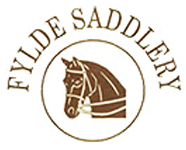Here at Fylde Saddlery, we have the knowledge and know-how to provide our customers with a range of horse-related goods. Today we are going to be providing a guide to horse bitting, covering what exactly it means to bit a horse, the products you will need, and how to use them.
Fylde Saddlery Bits
What is Bitting a Horse?
Bitting a horse is a training process, which is used to enable horses to accept a bridle or bit, then assisting the horse in developing the required musculature for a given equestrianism discipline. It is generally used to train saddle seat horses, but also be used for dressage and driving horses.
What do you need to Bit a Horse?
A majority of horses begin with using a snaffle bit, and sometimes this remains to be what is used for them. It allows for more movement in the mouth, and comes in different varieties, so it can be a process of trial and error when selecting the right tool for your horse. Straight bars, also known as Mullen mouth, have no joints, whilst French links has two joints, so that the pressure is evenly distributed over the tongue and mouth.
There are also milder options, such as the magic mouth, which is most suitable for horses with large tongues. One of the most popular pieces of equipment for bitting is the Waterford, as it is formed of several joints and is considered mild due to the mobility of the mouthpiece. Finally, the Magennis consists of small copper rollers, which can help the horse not to cross and set its jaw. At Fylde Saddlery, we stock all the necessary items for bitting within our range of horse bits, including English show snaffles, English pelhams, imported snaffles, double bits, and bit accessories.
Horse Bits
How do you Bit a Horse?
Horse bits work by resting inside the horse’s mouth, where there is a natural gap in the horse’s teeth. Attached to reins, the bit can be moved by the rider in order to communicate with the horse through the application of pressure. Where the pressure is applied depends on your chosen bit piece, so it can be on the horse’s lower jaw, the sides of the mouth, the tongue and/or the roof of the mouth. They may also pull on the bridle so that the pressure can also be felt at the top of the head, whilst others can be combined with chin straps to cause tightening under the horse’s chin.
Bitting a horse refers to the training process that teaches horses how to respond to the distinct movements of the bit through the use of its reins. The horse is taught how to yield to the pressure, so that the rider can direct the horse in the desired way. When bitting a horse, the pressure should be short-termed and followed by a release period.
They should become accustomed to the bit and taught to respond to the rein pressure before actually riding it. First, start with the horse wearing the bit for several hours without any reins. Secondly, combine this with the reins, which can be done by attaching the reins from a snaffle bridle to a bitting harness, applying small amounts of pressure until the horse responds appropriately.
Contact Us
For more information about our horse bitting, please visit our contact page, where you can send us a message, or otherwise, you can email us at f7lde@live.co.uk. In order to speak to a member of our team directly, you can call us on 01995670332. We will be happy to help with any queries you may have for us.

